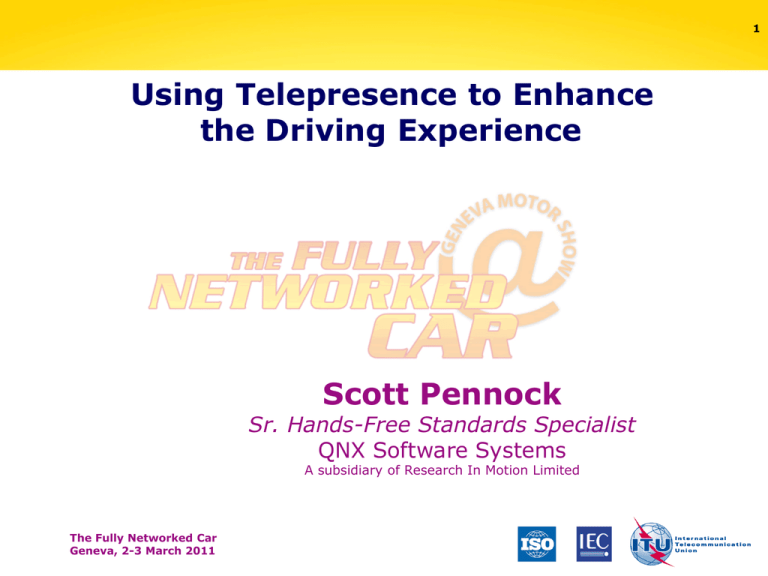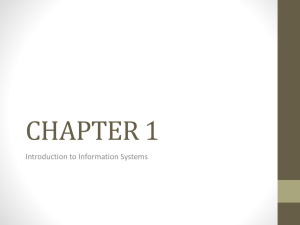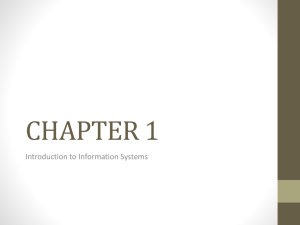Using Telepresence to Enhance the Driving Experience Scott Pennock Sr. Hands-Free Standards Specialist
advertisement

1 Using Telepresence to Enhance the Driving Experience Scott Pennock Sr. Hands-Free Standards Specialist QNX Software Systems A subsidiary of Research In Motion Limited The Fully Networked Car Geneva, 2-3 March 2011 Outline o What is Telepresence? o Telepresence demo o Driver Distraction o Turning the vehicle into a Telepresence terminal o Industry trends o Standardization efforts o Conclusions The Fully Networked Car Geneva, 2-3 March 2011 What is Telepresence? o Telepresence refers to the degree of realism created by a telecommunications system. o A high degree of Telepresence causes users to feel like they are physically present at the far end of the connection; or that the far end is physically present in the local environment. The Fully Networked Car Geneva, 2-3 March 2011 “Wider Bandwidth Speech” and “Spatial Audio Telephony” create a high degree of Telepresence + Wider bandwidth speech = Telepresence The Fully Networked Car Geneva, 2-3 March 2011 Spatial audio telephony Telepresence demo o Try to hear what Rod (red shirt) is saying in the following video clips: Current telephony Video: •Standard Definition •15 fps frame rate Audio: •Narrowband (300-3400Hz) •Mono Telepresence system Video: •High Definition •30 fps frame rate Audio: •Super-wideband (50-14000Hz) •Stereo The Fully Networked Car Geneva, 2-3 March 2011 Telepresence systems improve speech comprehension o Speech comprehension is more effortless • Better separation of speech from noise • More cues to identity of speech sounds The Fully Networked Car Geneva, 2-3 March 2011 Telepresence systems reduce Driver Distraction o Less attention used to comprehend speech o Reduced load on working memory o Less fatigue o One-way video can reduce talking from far end during high driver workload The Fully Networked Car Geneva, 2-3 March 2011 Turning the vehicle into a telepresence terminal The Fully Networked Car Geneva, 2-3 March 2011 Mobile Wideband Deployment o Orange has already started deploying wideband (50-7000Hz) on mobile networks in Europe o WIND mobile started providing wideband service in February 2011 in Canada o Verizon recently announced that it will start offering wideband with VoLTE starting in 2012 o AT&T is reported to start deploying in 2013 o …wideband speech has finally arrived on mobile networks and usage will dramatically increase over the next couple of years The Fully Networked Car Geneva, 2-3 March 2011 Everyday terminals are being enabled with Telepresence The Fully Networked Car Geneva, 2-3 March 2011 Availability of IP networks is increasing o Experts agree that next generation networks will be IP-based o LTE will enable VoIP over mobile carrier networks o Broadband access to the home is another way VoIP availability is increasing o WiFi hotspots may also increase due to demand for VoIP The Fully Networked Car Geneva, 2-3 March 2011 Lack of standards slowing deployment of Telepresence o In the short-term, telepresence will often be limited to devices of the “same type” o Challenges to be addressed through standardization 1) Functions and services offered by telepresence systems 2) Speech communications performance assessment 3) Signalling and negotiation of connection type 4) Signal capture/playback coordination (taking device and environment dependencies into account) 5) Signal transport — Mono signal with spatial info transmitted out-of-band — Multiple independent channels — Multi-channel codec The Fully Networked Car Geneva, 2-3 March 2011 Standardization efforts related to Telepresence systems o ITU-T SG 16 o ITU-T SG 12 o ITU-R SG 6C o ITU-T SG 9 o Video Quality Experts Group (VQEG) o ISO/IEC JTC 1/SC 29 WG11 (MPEG) o ETSI o 3GPP o 3GPP2 o IEEE STIT o IETF Real-time Applications and Infrastructure (RAI) o International Multimedia Teleconferencing Consortium (IMTC) o Unified Communications Interoperability Forum (UCIF) The Fully Networked Car Geneva, 2-3 March 2011 Major standardization efforts are now underway o Question 5 (Telepresence Systems) of ITU-T Study Group 16 (Multimedia coding, systems and applications) • Defining interoperability of Telepresence systems • Several major Telepresence companies participating o Question 18 (Conferencing and Telemeeting assessment) of ITU-T Study Group 12 (Performance, QoS and QoE) • Defining test methods and performance requirements for Telepresence systems • First meeting in January 2011 indicates this will be a very active area The Fully Networked Car Geneva, 2-3 March 2011 Conclusions o There are compelling reasons for deploying Telepresence systems in an automotive environment • Better user experience • Less listening effort • Reduced driver distraction o Vehicles platforms are well positioned for conversion into telepresence terminals o VoIP terminals and IP network availability increasing o Standards groups are starting to address roadblocks to widespread adoption of Telepresence systems The Fully Networked Car Geneva, 2-3 March 2011


